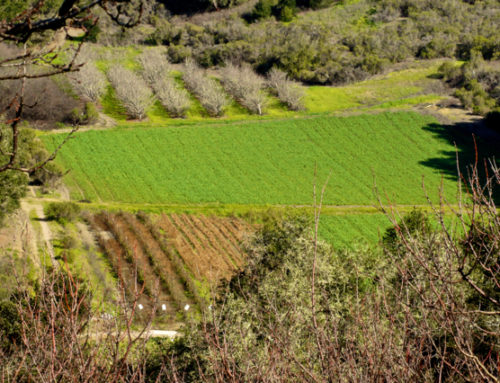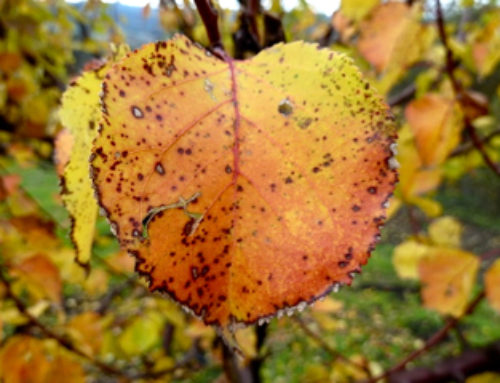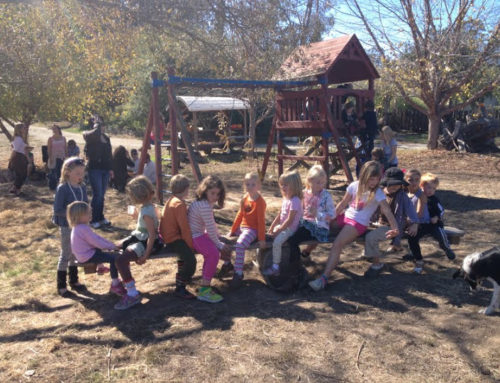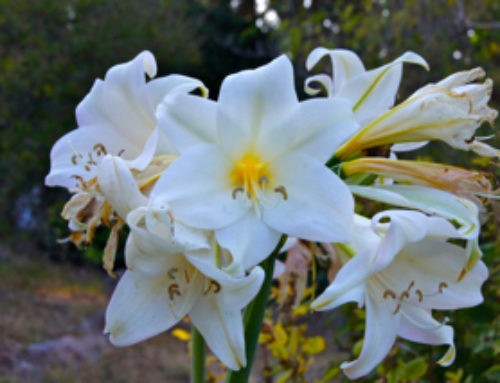After a rejuvenating winter break we are ready to reengage and start once again the harvest for the first CSA shares of the New Year. Normally we should be struggling with cold, wet and muddy conditions, instead this worrisome drought has forced us to keep irrigating, just as we would during the main season. We are in record territory as the driest and warmest winter (this week’s high will climb into the upper 70’s once again) and the long-term forecast doesn’t look good, with predictions of below average rainfall until April.

The short-term benefit is that crops are growing well and abundantly since we are fortunate to have very productive wells giving us ample water for our crops to grow. In the long-term however, all the farms in the Pajaro Valley are sucking water from the same groundwater basin. With increased demand by both rural and urban residents, the basin is showing signs of being overdrafted. Without the usual winter rains we will further increase the basin’s recharge deficit which will result in lower water tables and the potential for wells to run dry in the long-term.
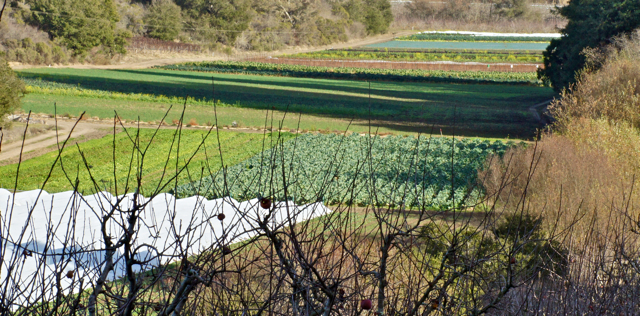
It will take a concerted effort by the entire community to cut back on water consumption and farmers, being the largest water consumers, will need to cut back by changing their cropping patterns and investing in more efficient irrigation practices.
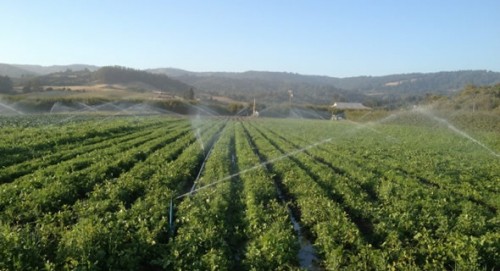
Here on the farm, we are going to switch to drip irrigation on crops we have traditionally used overhead sprinklers, some land will be left fallow during the driest times of the year, and more careful crop by crop water budgeting by implementing soil moisture monitoring and timing of irrigation will be essential.
Water is our most precious and life giving resource, and we need to learn how to make every drop count. In the meantime, we can only hope the weather pattern will change to send some much need moisture our way.
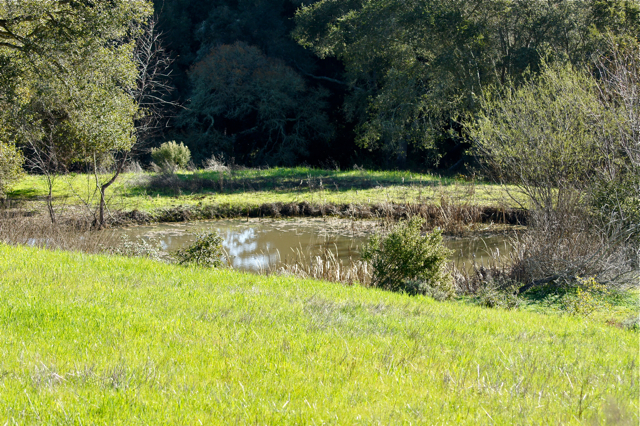
Pictured here is a pond next to the Upper Fields. This is last year at this time, and you can see the pond is full.

This year, the pond is empty.

